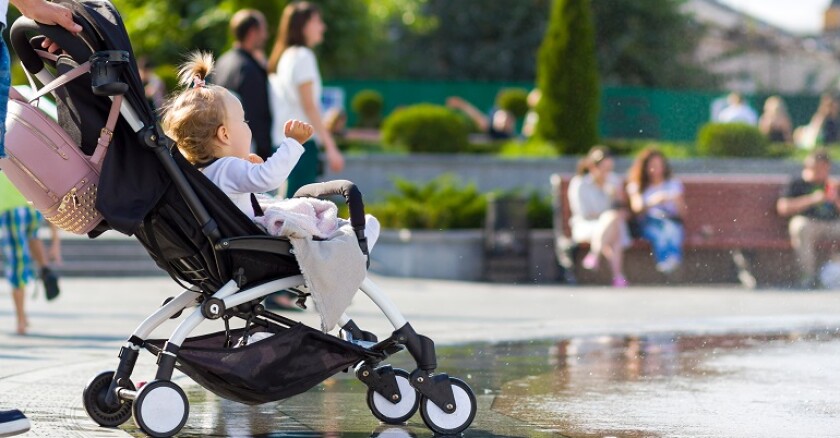I ask because “mobility” is a hot word in transportation and urban planning circles. There are mobility institutes and mobility programs. The World Economic Forum has a Future of Mobility initiative. In June, I moderated a discussion on “The Politics of Mobility” at an urban design nonprofit in New York. So, it’s important to define what it means.
As for my mobility, within my usual strollable universe I have hundreds of restaurants and cafés, dozens of grocery stores, and Prospect Park, one of the best examples of urban greenery in the world. In other words, while I’m out with my baby I can shop, lunch, have a beer and stroll beside meadows, winding hills and lakes. “Mobility is a means, not an end,” says Susan Zielinski, former director of the sustainable mobility program at the University of Michigan’s Transportation Research Institute. “The goal is for more people to meet more of their needs in a way that’s better for the environment, the economy, social equity and quality of life. It’s about access.”
By that measure, I have a high degree of mobility, even though most days I travel short distances very slowly. We have buses, bikeshares, taxis and subways in my neighborhood, but none of those work very well with an infant. Although, I will say, it’s touching how readily tough New Yorkers will help me carry my stroller, baby inside, up and down flights of stairs in the subway.
If I lived in a more car-oriented place, such as Phoenix or Virginia Beach, Va., I could jump in my car and, traffic permitting, travel a mile or two very quickly. But what sort of access would I gain? I might have to travel much farther to get to a store, playground or friend’s home, even though the total time might be the same as walking around Brooklyn. If I lived in a rural area, I would have to travel 10 or 20 or 50 miles to get where I want to go.
To state the obvious, unless they are exercising or sightseeing, people don’t usually travel for the joy of it. They typically move to get something. The more services and amenities you have around you, the shorter you need to travel in physical distance.
And then there’s the condition of travel. Driving in a luxury automobile on a winding country road is a pretty pleasant experience. Being stuck in a traffic jam in a battered old heap with broken air conditioning isn’t. A crowded, dirty subway that arrives and departs with little regard for its schedule is different from a swift and cool one that arrives on time, as we in New York City are discussing amid our current transit woes. Should the quality of your movement affect your mobility score? I think so.
Paul Mackie, director of research and communications for the Mobility Lab in Arlington, Va., points out that we all have different spheres of mobility -- including our neighborhood, our city, our region and the world beyond -- and they vary in quality. “In your Brooklyn example, you might have great access to everything by foot in your walkable neighborhood, but your ability to access your doctor on the Upper West Side is limited because driving in the city is difficult and the subways are delayed,” he wrote in an email.
Although I find the term “mobility” pretentious, it may have come into favor because it takes in other options besides personal driving for getting around. And having more ways to travel improves your mobility, by my scorecard. “The mobility mix is getting really interesting now with Uber, Lyft, e-bikes, e-scooters, bikeshare, dockless bikeshare, hover boards, autonomous cars, autonomous shuttles, work shuttles,” Mackie wrote, and people are waking up to that. “They’re not simply sleepwalking into the cars in their driveways in the morning.”
So can you improve your mobility in ways that slow you down? This is where questions of development come in. If 10,000 new apartments were built around me, the additional neighbors would support more churches, stores and clubs and thus improve my mobility, even though driving would be slower and parking harder. This same equation holds true in suburban areas. When communities oppose development because it will create more traffic, it’s important to point out that by some measures mobility will be improved because more goods and services will be within easier reach.
For governments, researchers and advocates examining these questions of mobility, it’s important to think about the word in all its meanings, including speed of moving, ways of moving and what one is moving toward. Sometimes the slower you move, the farther you get.









